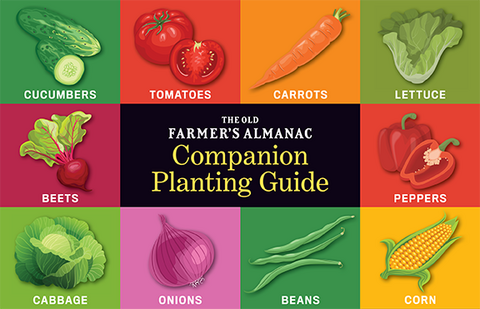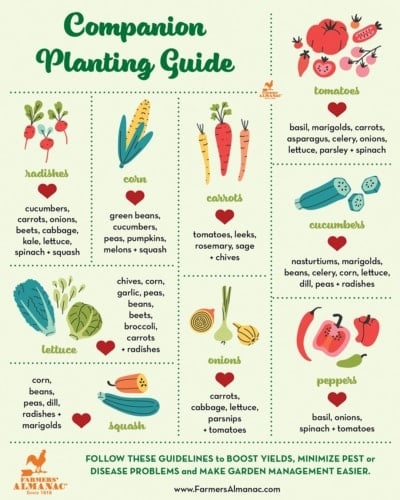Beets Companion Planting Chart: The Ultimate Guide To Growing Healthy Beets
Beets Companion Planting Chart: The Ultimate Guide to Growing Healthy Beets
Beets are a delicious and nutritious root vegetable that is relatively easy to grow. They are also a good choice for companion planting, which is the practice of planting different types of plants together for mutual benefit.
In this blog post, we will discuss the benefits of companion planting with beets and provide a companion planting chart that you can use to plan your garden. We will also cover some of the best companion plants for beets, as well as some plants that you should avoid planting near them.
Benefits of Companion Planting with Beets
There are many benefits to companion planting with beets. Some of the most common benefits include:
- Attracting beneficial insects: Certain companion plants can attract beneficial insects, such as ladybugs and parasitic wasps, which can help to control pests that can damage beets.
- Distracting pests: Other companion plants can distract pests from beets, making them less likely to attack the beets. For example, planting marigolds near beets can help to deter aphids.
- Improving soil quality: Some companion plants can improve the soil quality around beets, making it more nutrient-rich and well-drained. For example, planting legumes, such as peas and beans, can add nitrogen to the soil.
- Shading the soil: Some companion plants can shade the soil around beets, which can help to prevent weeds from growing and keep the soil moist. For example, planting lettuce or spinach near beets can provide some shade.
Companion Planting Chart for Beets
The following companion planting chart can help you to plan your garden and choose the best companion plants for beets.
| Companion Plant | Benefits |
|---|---|
| Allium (onions, garlic, chives) | Repels pests, improves soil quality |
| Beans (bush beans, pole beans) | Fixes nitrogen in the soil, attracts beneficial insects |
| Broccoli | Improves soil quality, deters pests |
| Cabbage | Improves soil quality, deters pests |
| Carrots | Repels pests, helps to prevent root rot |
| Corn | Provides shade, attracts beneficial insects |
| Lettuce | Shades the soil, helps to prevent weeds |
| Mint | Repels pests, improves soil quality |
| Onions | Repels pests, improves soil quality |
| Radishes | Repels pests, helps to break up compacted soil |
| Spinach | Shades the soil, helps to prevent weeds |
Plants to Avoid Planting Near Beets
There are a few plants that you should avoid planting near beets. These plants include:
- Cucumbers : Cucumbers have shallow roots that can compete with beets for water and nutrients.
- Pole beans : Pole beans can shade beets and prevent them from getting enough sunlight.
- Spinach : Spinach can also shade beets and prevent them from getting enough sunlight.
- Tomatoes : Tomatoes can attract pests that can also damage beets.
Conclusion
By following the tips in this blog post, you can grow healthy beets and enjoy a bountiful harvest. Companion planting is a great way to improve the health and productivity of your garden, and it's a fun and easy way to experiment with different plants.
So get out there and start planting!
Beets are a delicious and nutritious vegetable that can be easily grown in your garden. But did you know that there are certain plants that can help beets grow even better? Companion planting is the practice of planting certain plants together to benefit each other. For example, beets can benefit from being planted near onions, beans, lettuce, radishes, and strong-scented herbs. These plants can help to deter pests, improve the soil quality, and even enhance the flavor of the beets.
If you're interested in learning more about beet companion planting, I recommend visiting Gardenia Inspiration. This website has a comprehensive companion planting chart that lists all of the best and worst plants to grow near beets. You can also find helpful tips on how to plant and care for beets, as well as recipes for delicious beet dishes.
Image of beets companion planting chart
- Image 1: This chart shows which vegetables are good companions for beets, and which ones should be avoided. Good companions include carrots, onions, and tomatoes. Avoid planting beets near brassicas, such as broccoli and cabbage.

- Image 2: This chart shows the benefits of companion planting with beets. For example, carrots can help to repel pests from beets, and tomatoes can help to improve the flavor of beets.

- Image 3: This chart shows the ideal spacing for planting beets. Beets need at least 2 inches of space between each plant.

- Image 4: This chart shows the ideal pH level for growing beets. Beets prefer a slightly acidic soil with a pH of 6.0 to 6.8.

- Image 5: This chart shows the water requirements for growing beets. Beets need regular watering, especially during hot weather.

Post a Comment for "Beets Companion Planting Chart: The Ultimate Guide To Growing Healthy Beets"